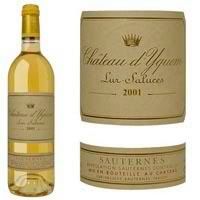Tubers - Eight Potatoes Worth Knowing !

Some of the best potatoes were bred almost 100 years ago. Many of the finest among them are still around today. The purple-blotched Catriona (1920) for example has an intese walnut flavor that pushes it right over the top. Potato flavors are best equated with those of nuts or breads. A subtle hazelnut taste, for example, is a hallmark of Arran Victory (1918), a violet-skinned potato from the Isle of Arran, off the coast of Scotland. It ranks as one of the great connoisseur's potatoes of the 20th century. Potatoes come in all the same natural colors of the other members of the genus solanum to which they are all botanically related (eggplants, peppers, and tomatoes). Generally, this means red, purple, blue, yellow, orange, pink, and white. The natives of the high Andes, where potatoes originated, enjoy thousands of different varieties and colors. They shrug off the potatoes we grow in North America and Europe as rather bland and uninteresting, yet to us many of their potatoes taste somewhat bitter or sharp. This is because potatoes with a lot of pigments in the skin or flesh carry different genetic material inherited from wild potatoes, which rely on their bad taste to fend off animals. This natural defense system is still present in the plant itself and is toxic to humans and many animals. Potatoes turn green when they've been improperly exposed to light, so never buy potatoes with green spots on their skin. Although the flesh of some potatoes is colored, very few other than the whites and yellows have been bred for solid shades. I mention these features because of the recent rage for blue potatoes, which were originally never, ever eaten by connoisseurs. Storage has a great effect on both the texture and flavor of potatoes. Keep Potatoes in brown paper bags at around 40 degrees Fahrenheit. Unfortunatly in supermarkets you will get poorly stored potatoes that taste like cardboard. You have probably guessed that most of the potatoes I use are not the common sorts you are likely to find in a supermarket. My rule of thumb; If you want a over the top experiance you must not use average mass-potatoes! Here are the eight tubers that are my personal favorits and that you need to know about. If you have a chance, you must try them:
ALL-RED Large, smooth tuber with cranberry-red skin and rose-pink flesh. Retains color when cooked. Low starch content makes this variety one of the greatest boiling potato for salads or any dish that requires potatoes to retain their shape. Great nutiness. Midseason variety developed by Robert Lobitz of Paynesville, Minnesota, and introduced about 1984.
ARRAN VICTORY Round, smooth tuber with bright violet skin and white flesh. They have brilliantly white floury flesh and a fine flavour. Considered the Rolls-Royce of potatoes. Best when steamed then spritzed with a little Scotch whisky. Flavor improves with storage. Midseason variety developed by Donald Mackelvie of Lamlash, Isle of Arran, Scotland, and introduced in 1918.
BEAUTY OF HEBRON Large and blocky with pink skin and white flesh. Beautiful texture and taste. The all-purpose potato. Early variety developed by Albert Bresee of Hubbardton, Vermont, and introduced in 1878.
BLISS'S TRIUMPH Large and blocky with beautiful rose-pink skin and white flesh. Very good all-purpose potato with a rich, smooth texture. This is your ultimate baked potatoe. Just a little fresh butter or a few spritzer of white wine and some salt and you will be blown away! Early variety introduced by B.K. Bliss & Sons of New York in 1874.
CATRIONA Large, smooth, and somewhat kidney-shaped with parchment-colored skin covered with deep violet patches. Flavor of pale yellow flesh hints of walnuts or freshly baked bread. Similar culinary traits as Arran Victory, and considered its equal by many food experts. Midseason variety developed by Archibald Finlay of Auchtermunchty, Scotland, in 1920.
CHILE/ANCUD Oblong and blocky with violet-brown skin and white flesh. Early variety with a very intense mushroom flavor. Found in the 1920s near the town of Ancud on the island of Chiloé, off the coast of Chile, by Russian geneticist Nikolay Vavilov of Moscow.
NÉGRESSE Long and narrow with blue-black skin and dark blue flesh. When cut with a knife, the raw potato exudes inky juice that stains. When boiled, potato turns blue-gray; when steamed, it holds its color. Sometimes called Truffe de Chine (Chinese truffle). The analogy to truffles is apt, it tastes like a truffle. Midseason variety introduced into France from Peru about 1815.
LA RATTE D'ARDÈCHE Long, smooth tuber usually hooked into a point at one end. Skin is parchment-colored, flesh a soft yellowish white. Being grown commercially in Oregon under the name La Ratte de Paris by Jim Huston, who first marketed Yukon Golds. This is the potatoe of all potatoes in my world. Whenever you want new potatoes of fingerlings, this is the real deal. All the top chefs use almost exclusivly this potatoe! Very early variety introduced in France in 1872 and now one of the cornerstones of the French high-end cookery.
Labels: the best of










0 Comments:
Post a Comment
<< Home